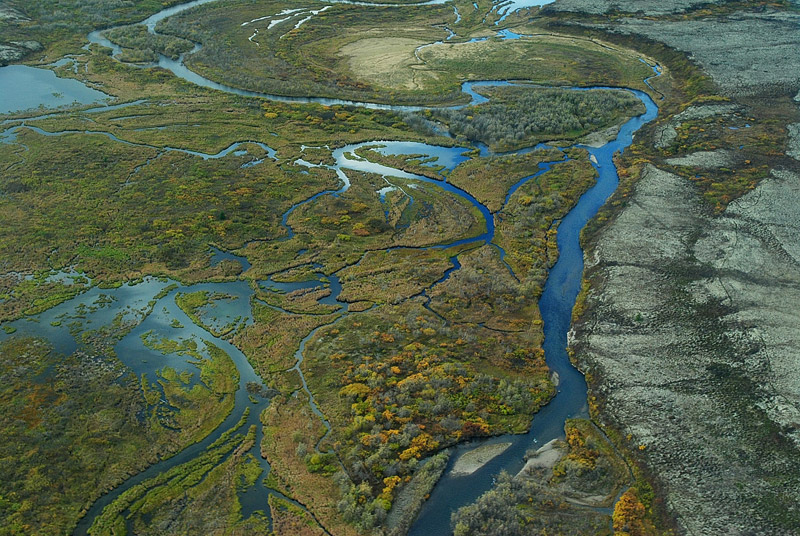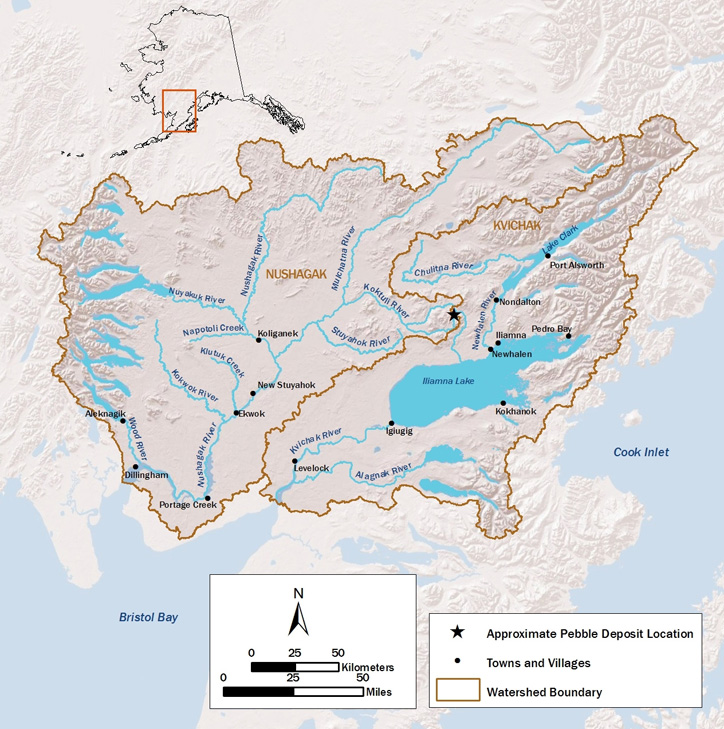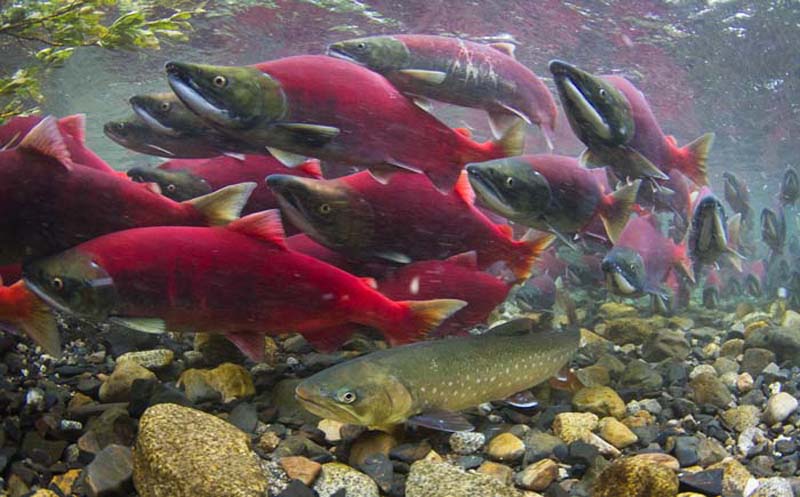
A view of Upper Talarik Creek which flows into Lake Iliamna in the Kvichak River watershed. The Bristol Bay watershed provides habitat for numerous animal species, including 29 fishes, more than 190 birds, and more than 40 terrestrial mammals. Chief among these resources is a world-class commercial and sport fishery for Pacific salmon and other important resident fishes. The watershed supports production of all five species of Pacific salmon found in North America: sockeye, coho, Chinook, chum, and pink.
The Trump Administration, rejecting concerns over the risks to Alaska’s fishery, cleared the way on Friday [July 24, 2020] for the Pebble Mine
By
From the air it looks like just another tract of Alaska’s endless, roadless tundra, pockmarked with lakes and ponds, with a scattering of some of the state’s craggy mountains.
But this swath of land, home to foraging bears and spawning salmon about 200 miles southwest of Anchorage, has been a battleground for years.
The fight is over what lies just below the surface: one of the richest deposits of copper, gold and other valuable metals in the world. It sets two of the state’s most important industries, mining and fishing, against each other.
A mining company plans to dig a pit, more than a mile square and a third of a mile deep, over two decades to obtain the metals, estimated to be worth at least $300 billion.

Supporters say the project, known as the Pebble Mine, would be an economic boost for a remote region that has missed out on the North Slope oil boom and other resource-extraction development in the state over the past half century. It would employ nearly 1,000 people, and the Canada-based company, Northern Dynasty Minerals, would pay for infrastructure improvements in some Native Alaskan villages and provide cash dividends totaling at least $3 million to people in the area.
But opposition has long been widespread, both in the region and statewide, with concerns about environmental damage and the potential for harming another critical resource: salmon. The fish is the main traditional subsistence food for many of the Native Alaskans in the region and the basis of both a thriving sport-fishing industry and, in nearby Bristol Bay, one of the largest commercial wild salmon fisheries in the world.
The mine will be located in two watersheds that feed fish-spawning rivers. Opponents say tailings left from the mining operation pose risks if heavy metals or other contaminants from them leach into groundwater or if dams holding back the tailings fail in an earthquake.
The Pebble Mine gained new momentum under President Trump’s more industry-friendly policies. While at first continuing its criticism of the project, the Environmental Protection Agency eventually reversed the Obama-era decision blocking it.
On Friday, the Army Corps of Engineers issued a final environmental impact statement, or E.I.S., for the project. Under normal operations, the Corps wrote, the project would not result in “long-term changes in the health of the commercial fisheries in Bristol Bay.”
In addition to the open-pit mine, the plan would include large dammed ponds for the tailings, some of them toxic, that result from mining and concentrating the metals, 80 miles of road and pipeline to carry the concentrate to a new port on Cook Inlet, and a 165-mile natural gas pipeline for a generating plant to power the operation.
In an interview this week [July 24, 2020], Mr. Collier described the release of the final impact statement as “the most significant day in the 15-odd-year history of the Pebble project.”
Read the complete story . . .

Sockeye on spawning run in Alaska. Notice the trout visitor waiting for an opportunity to feed on eggs. Sockeye on the spawning run in Alaska. Notice the trout visitor waiting for an opportunity to feed on eggs — Wikipedia Commons image.





